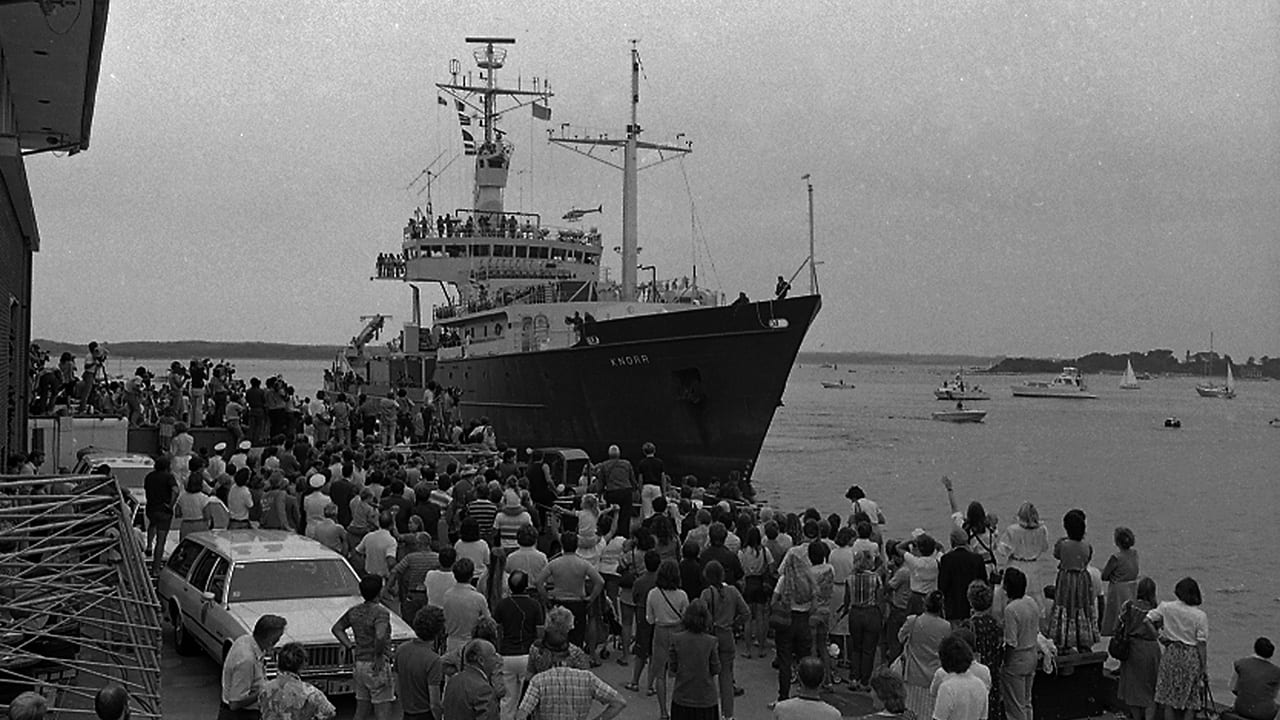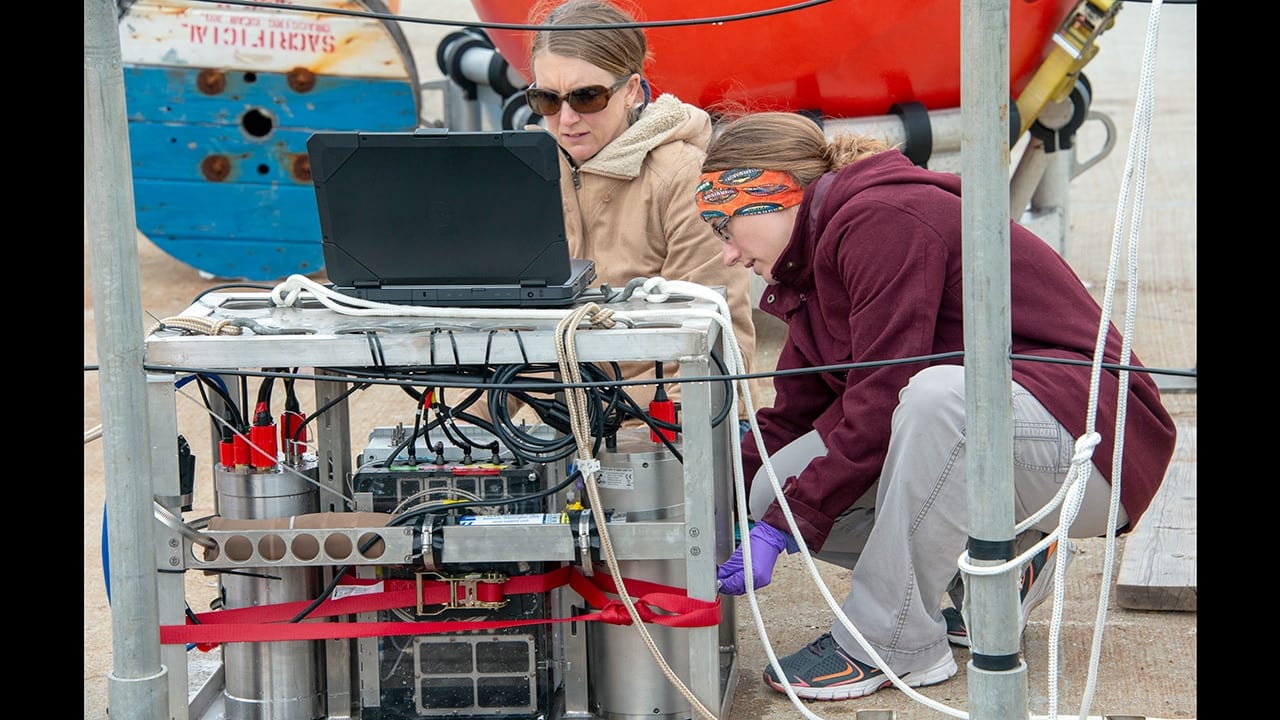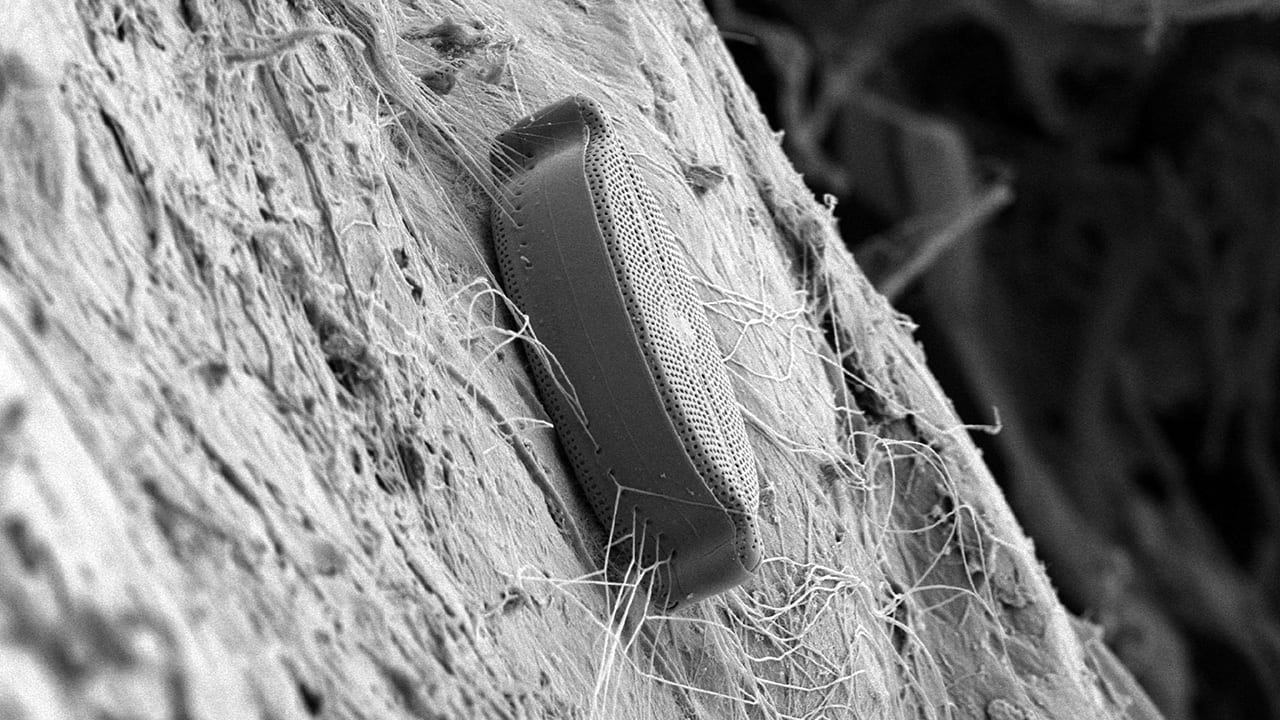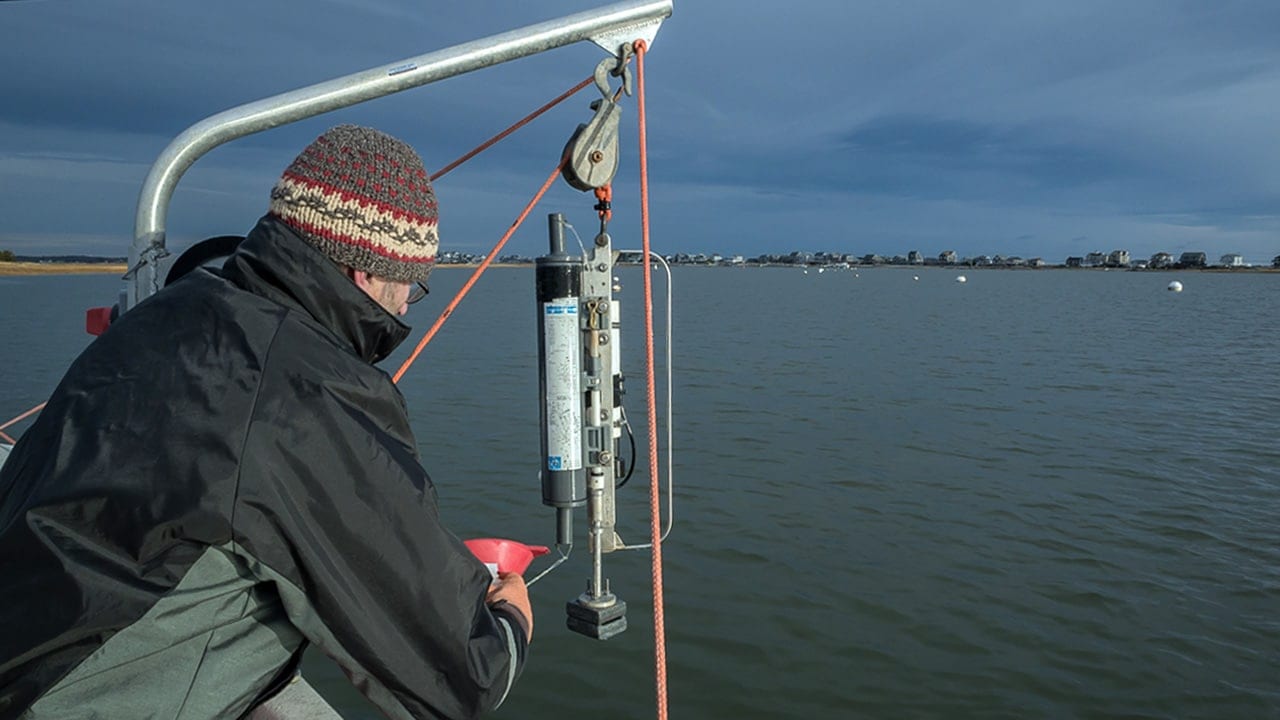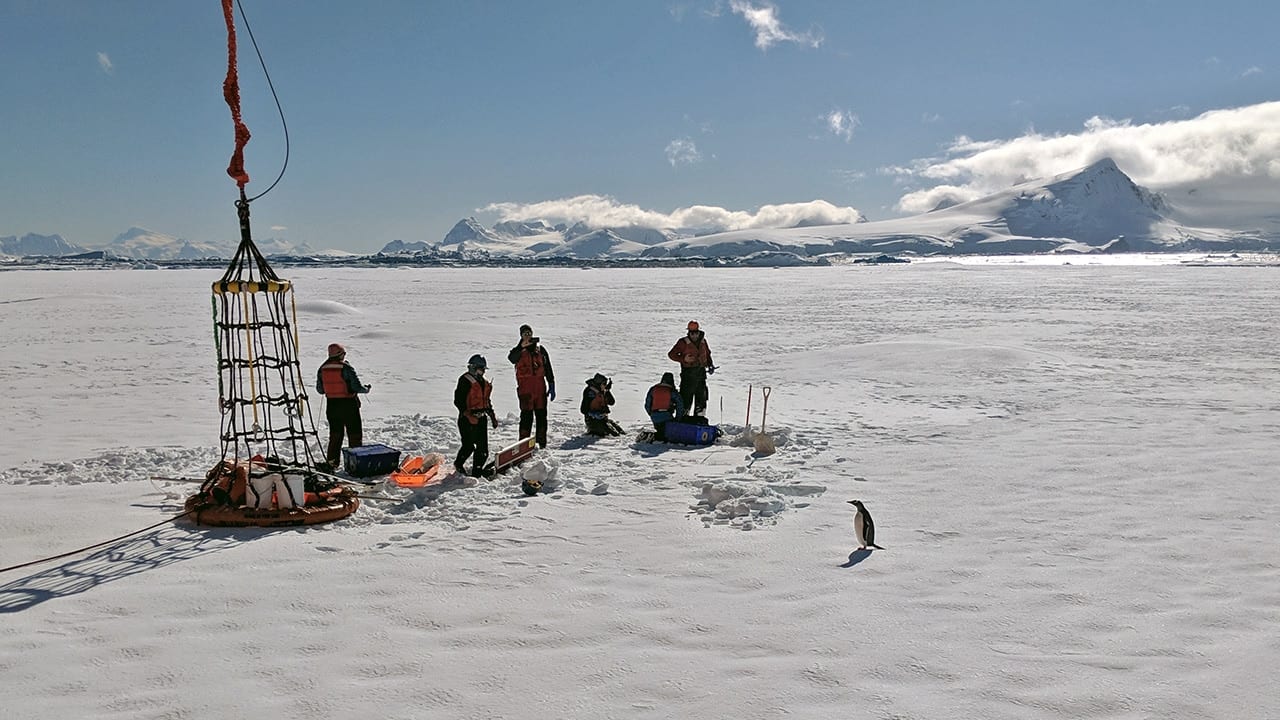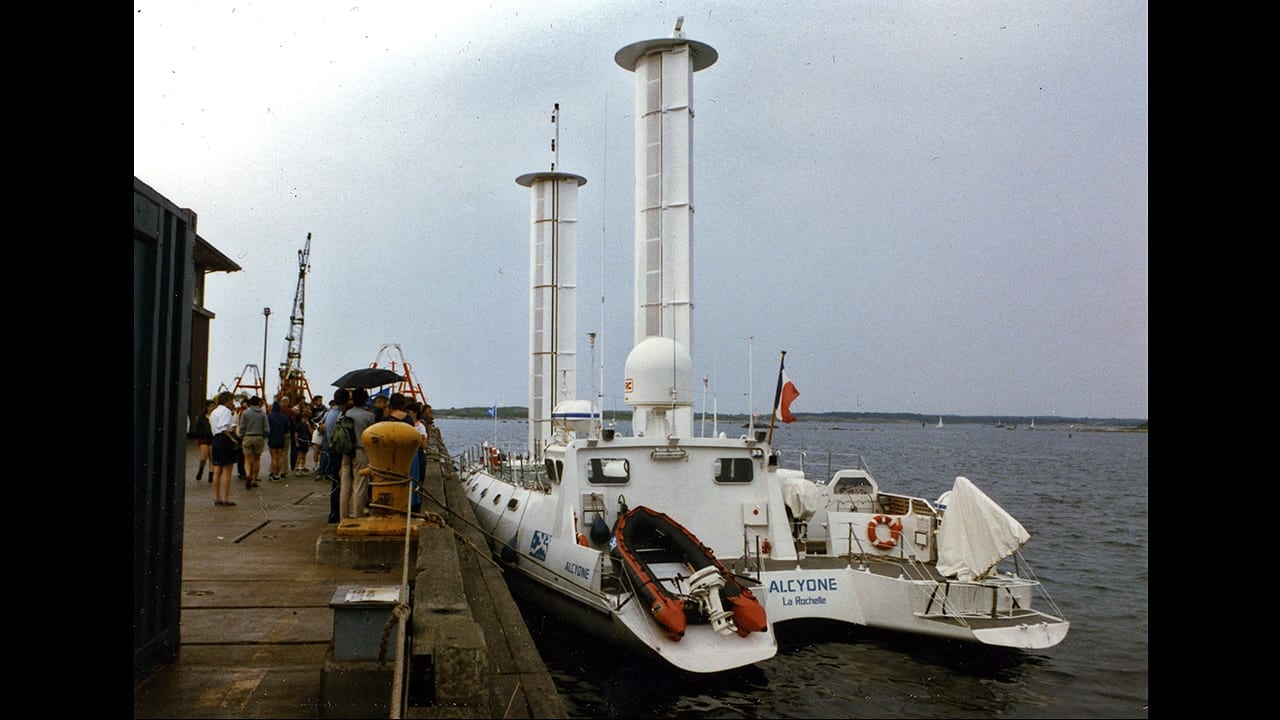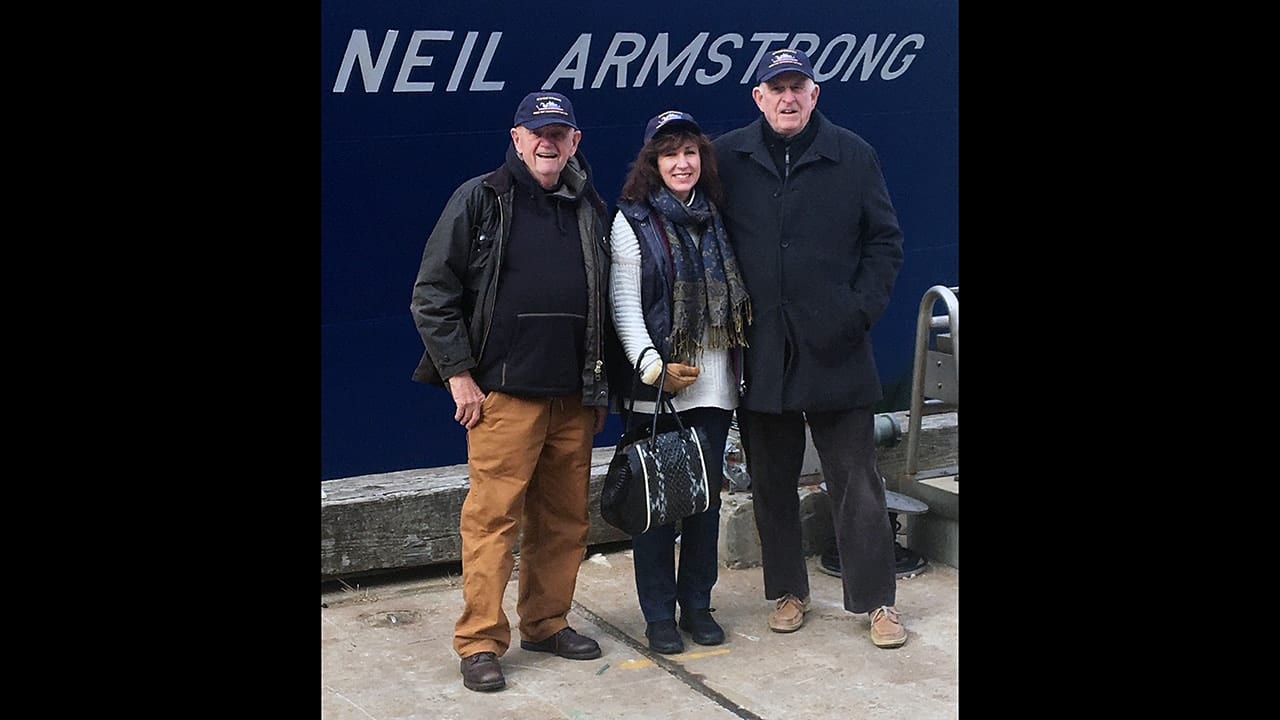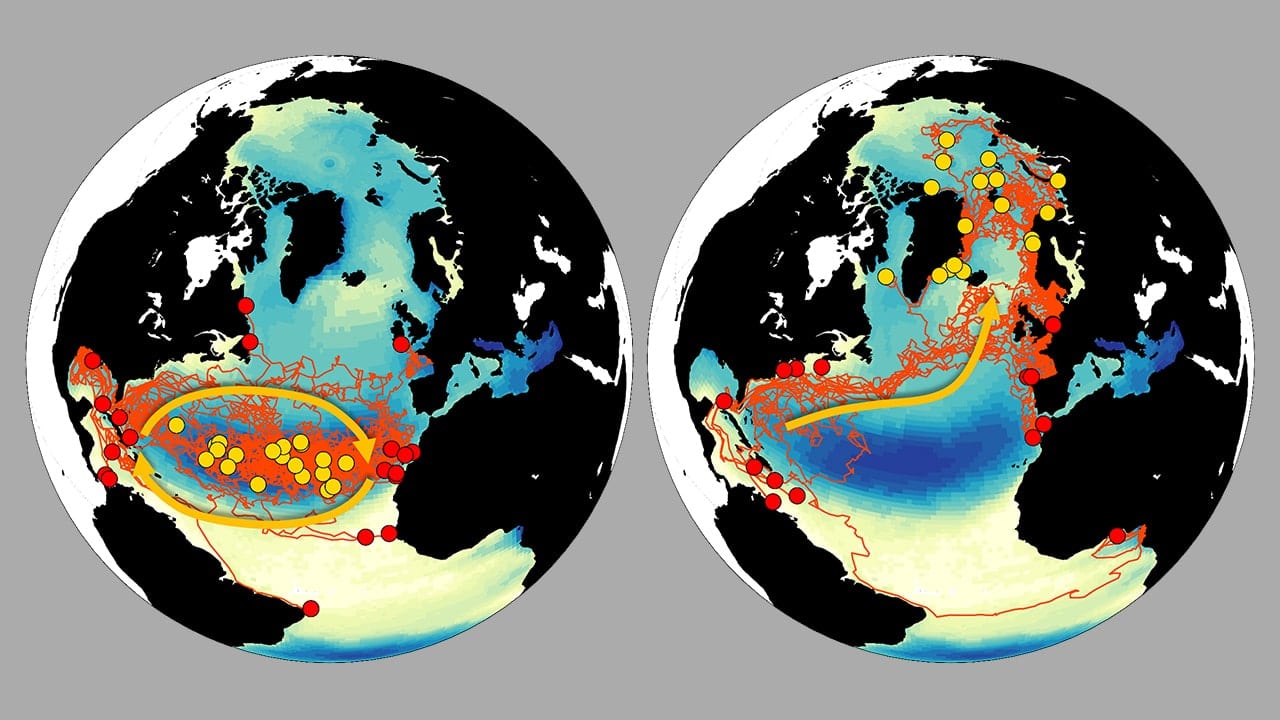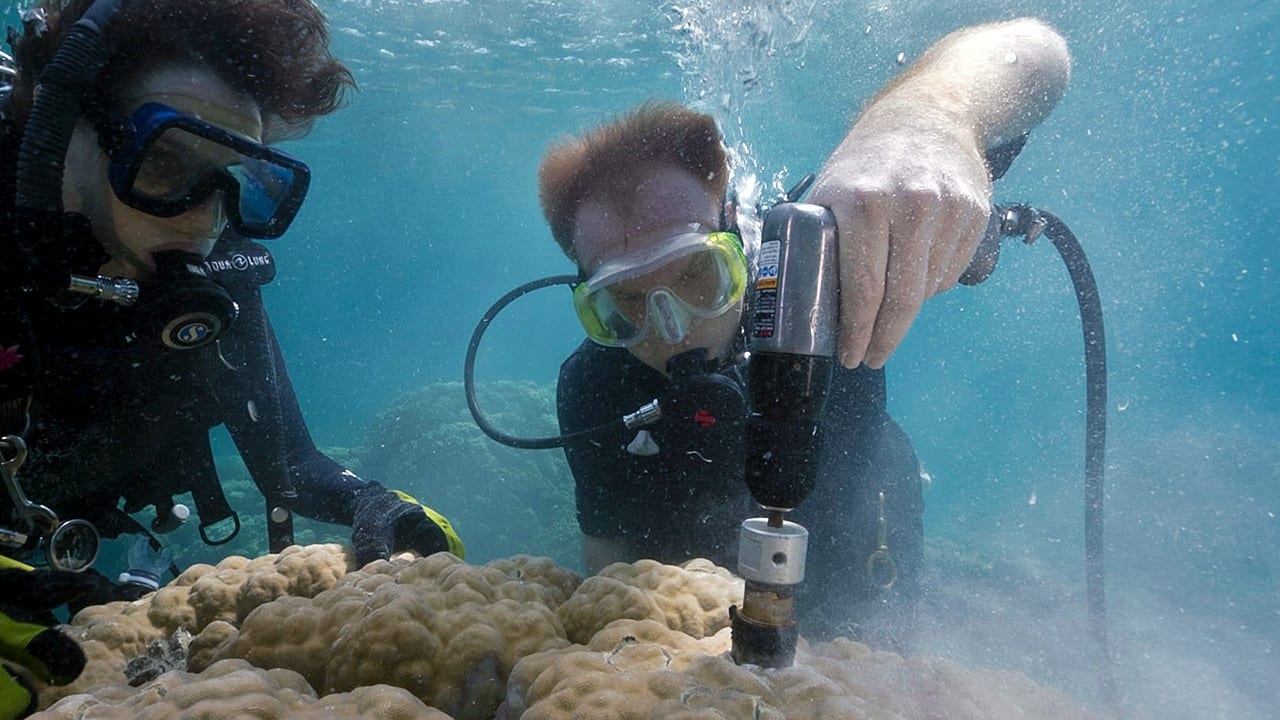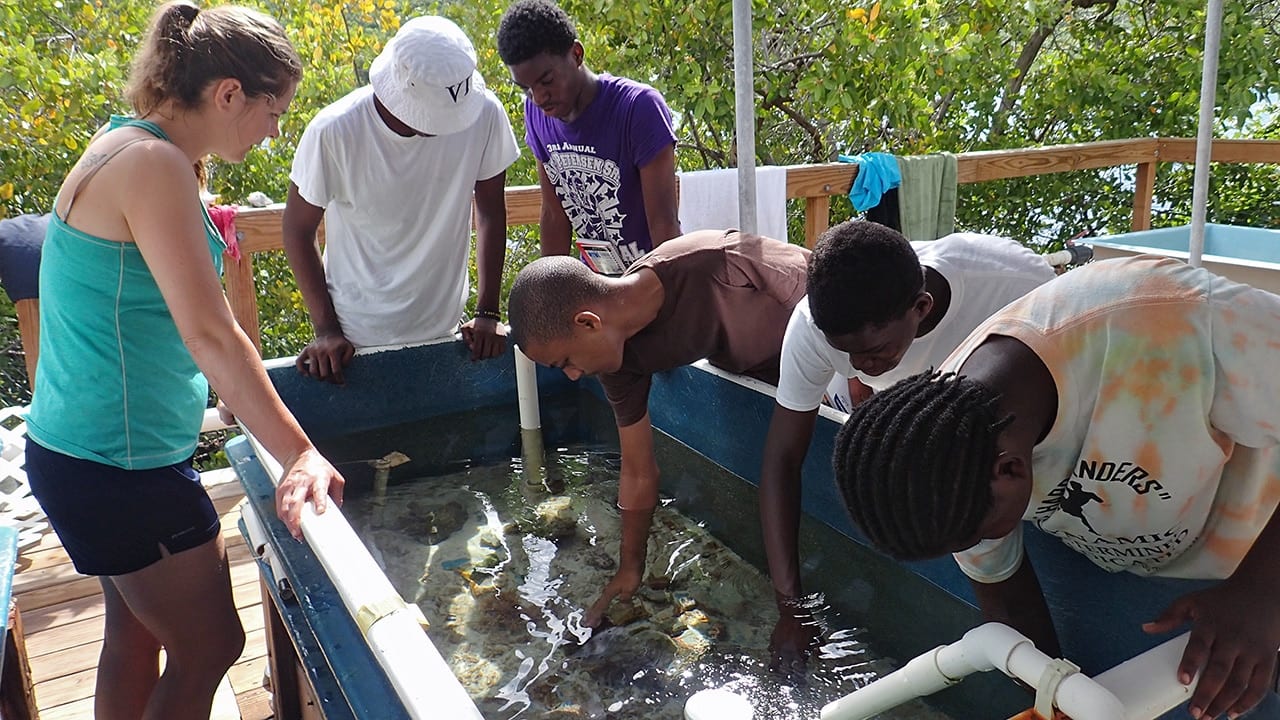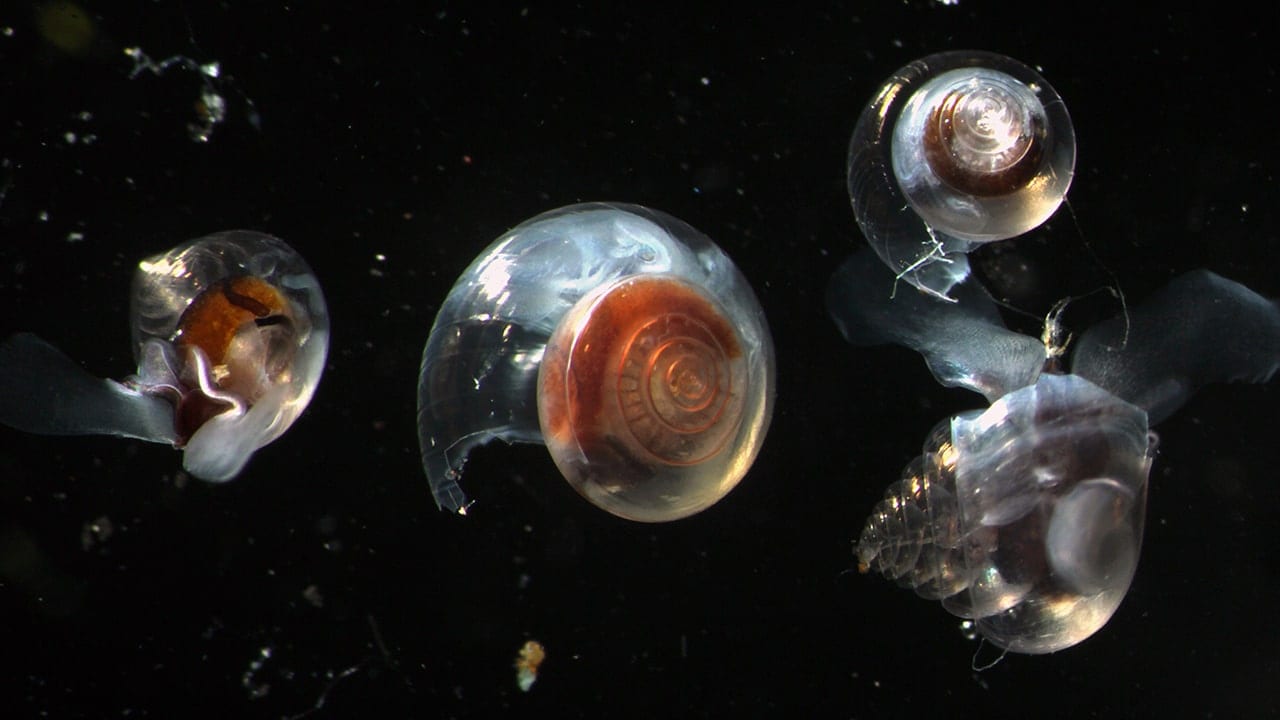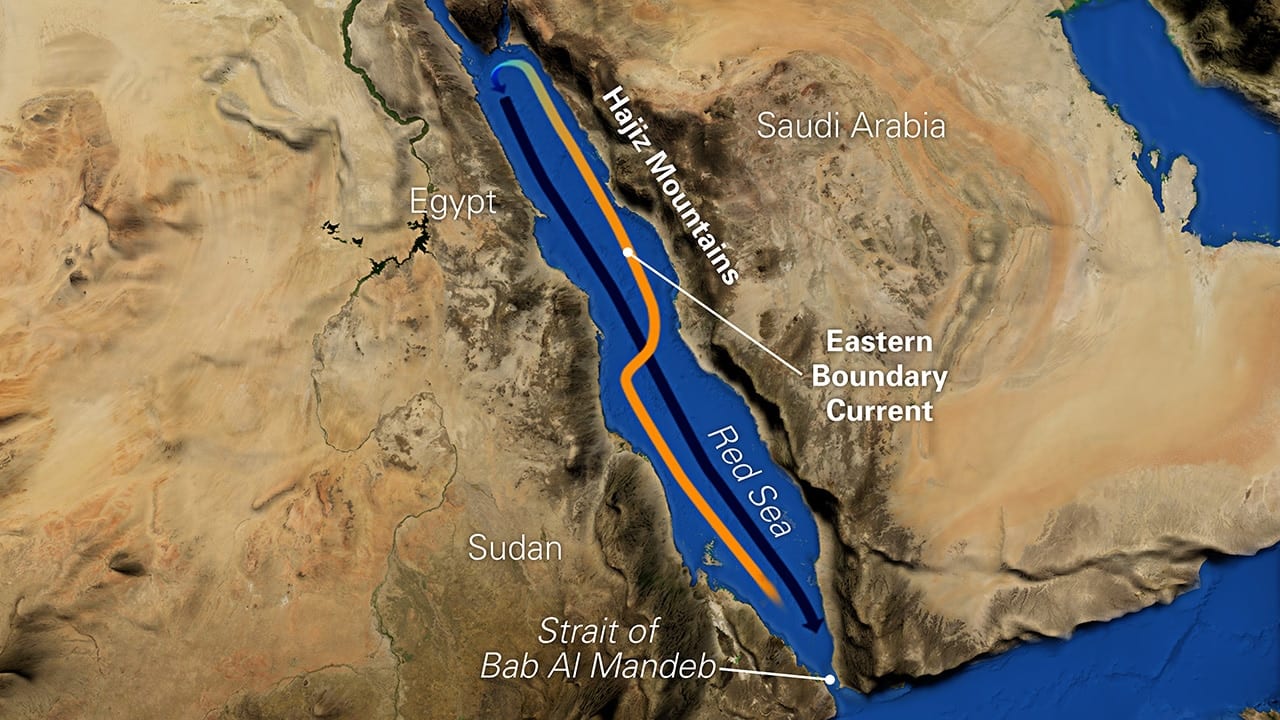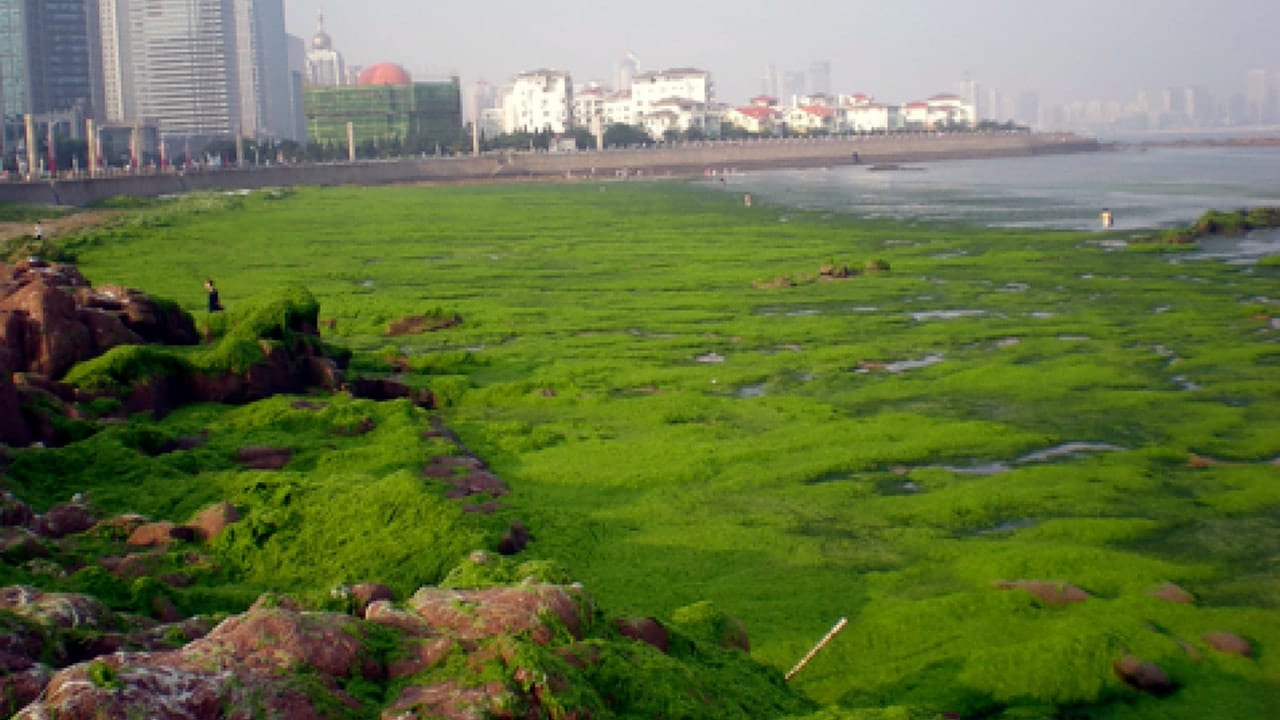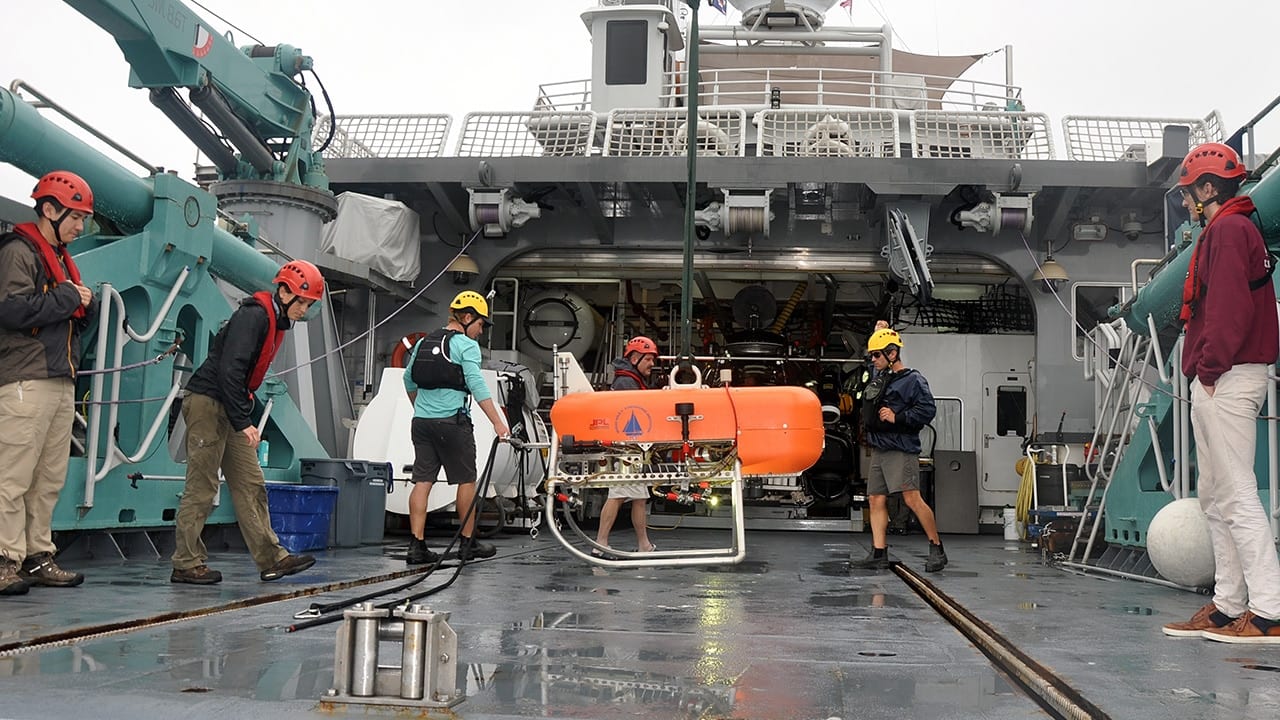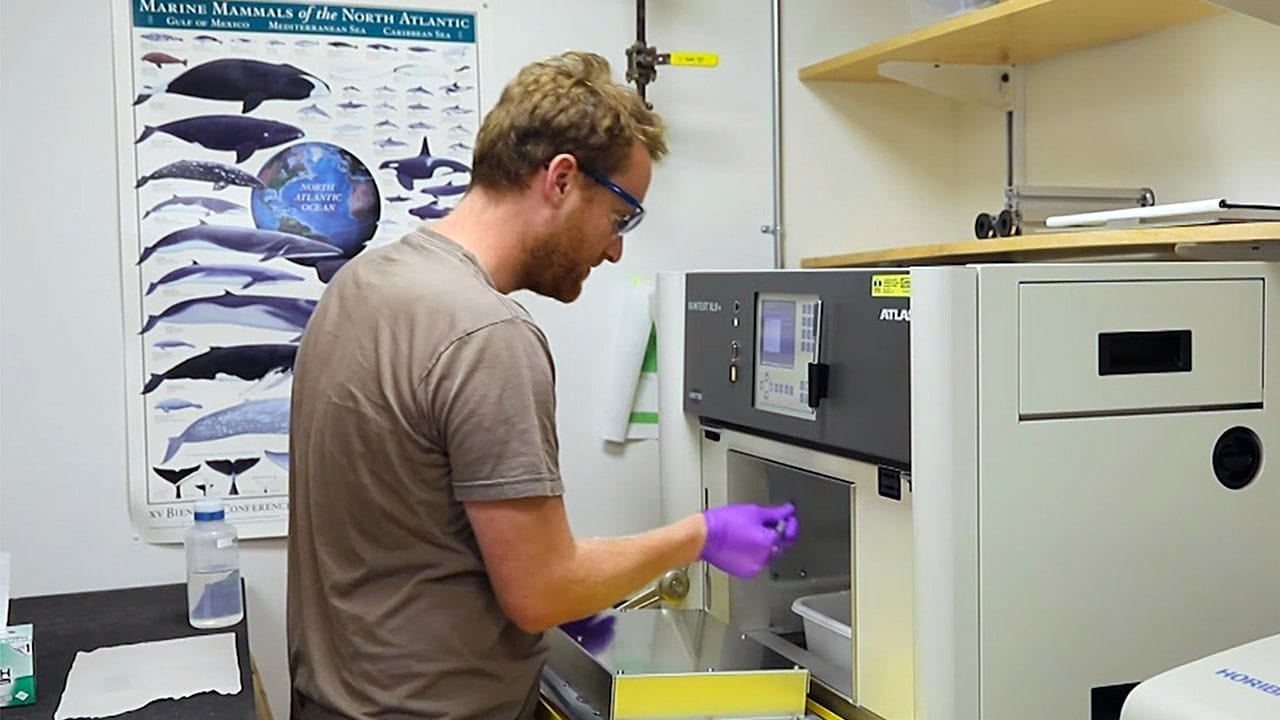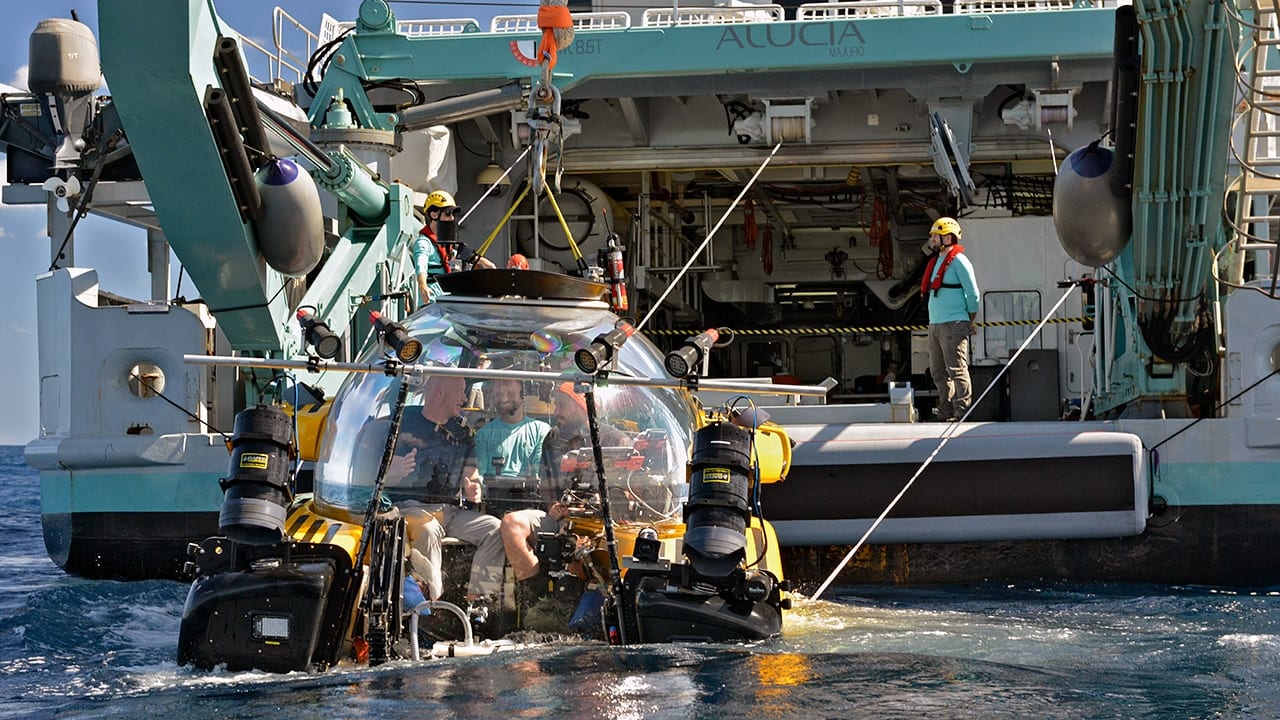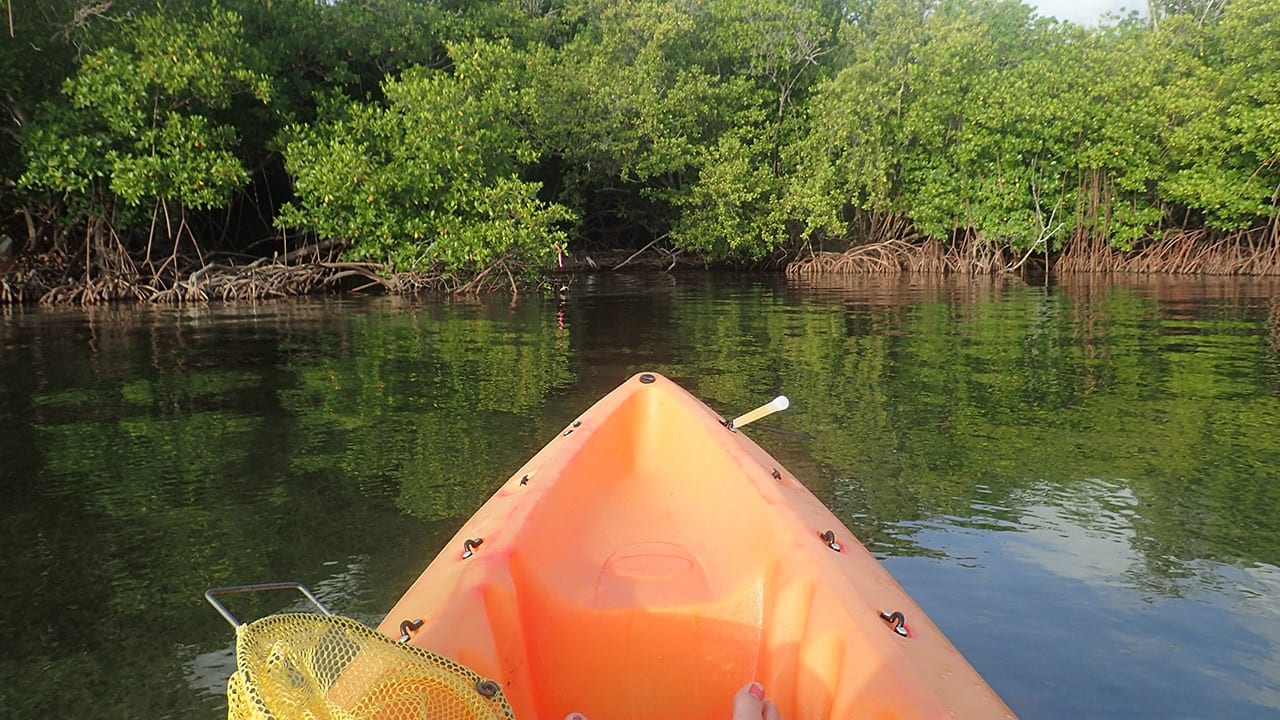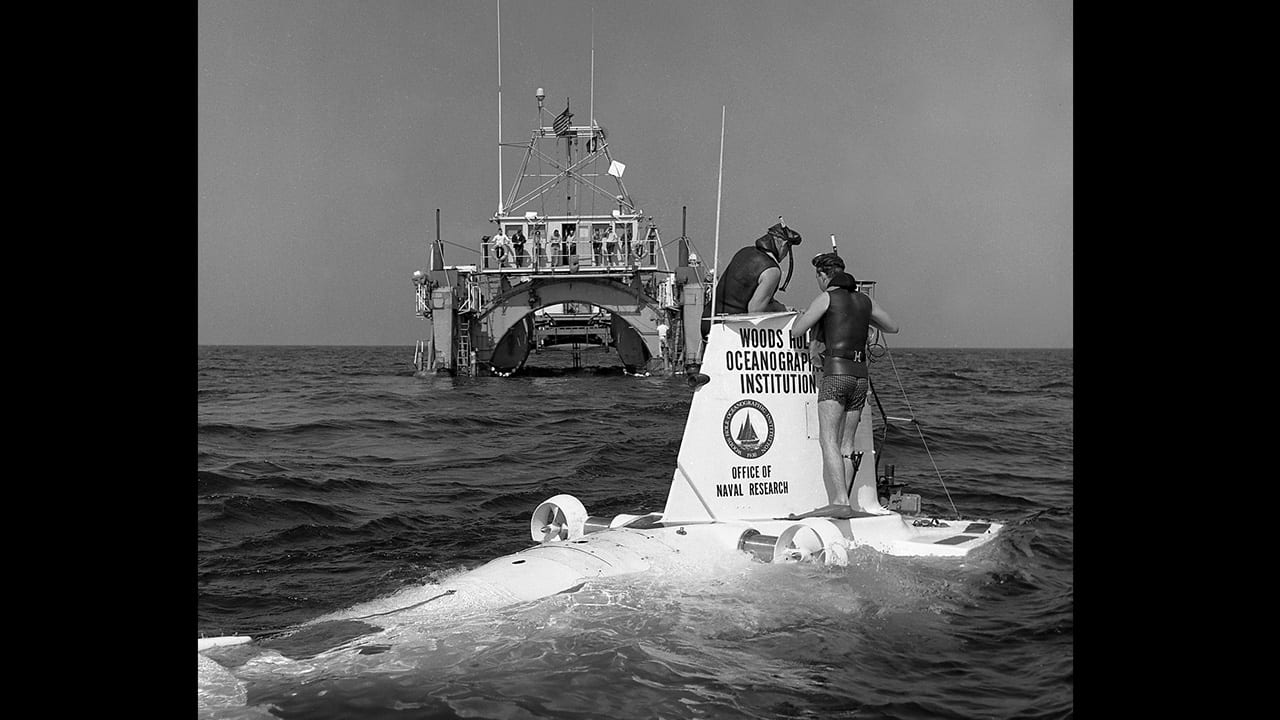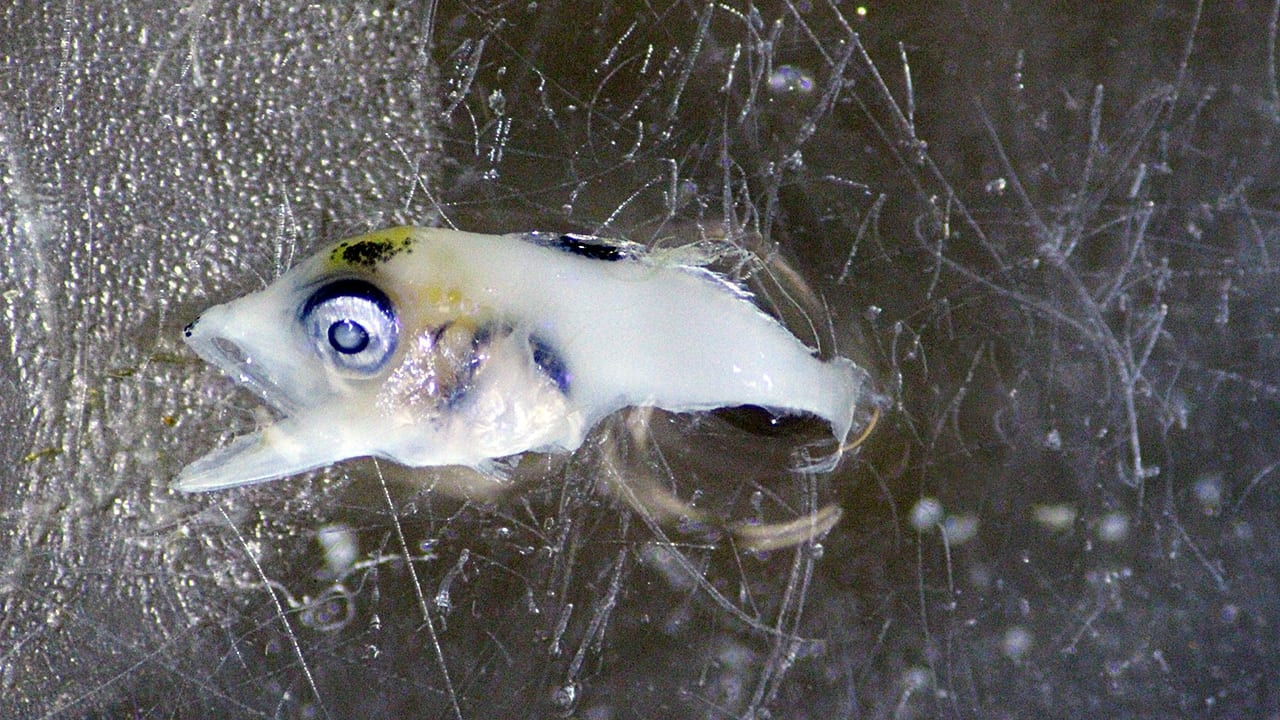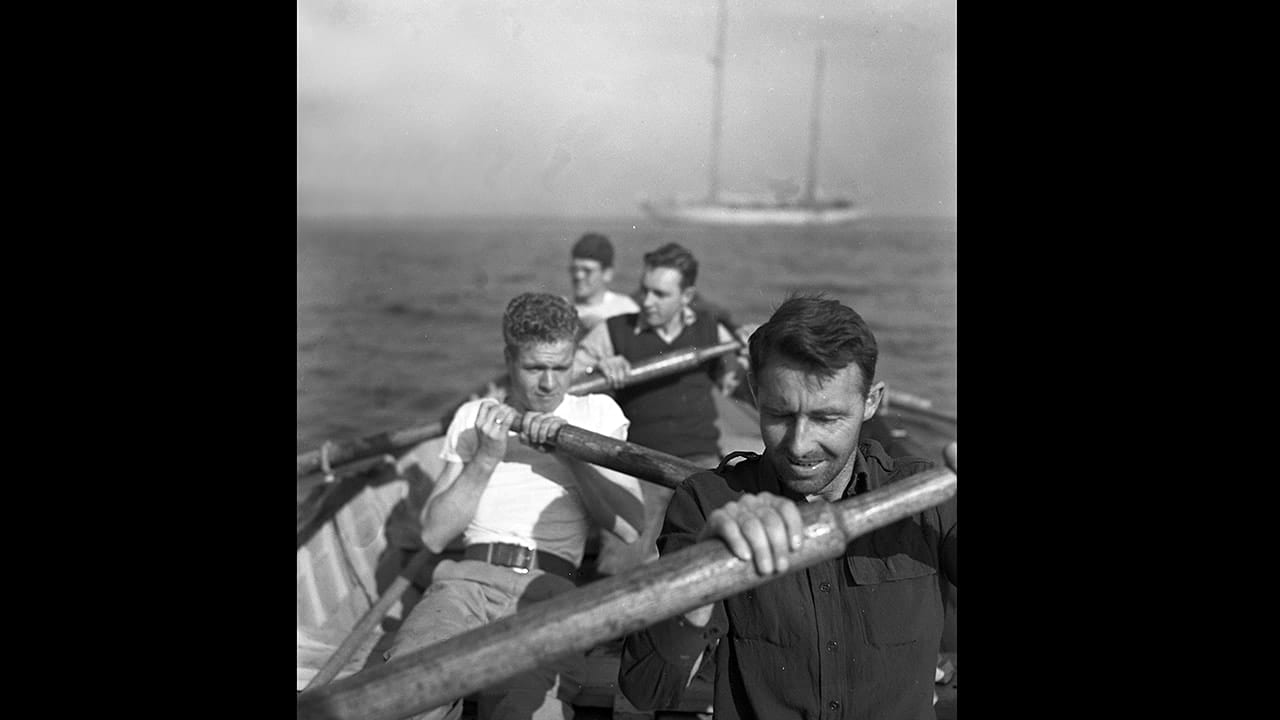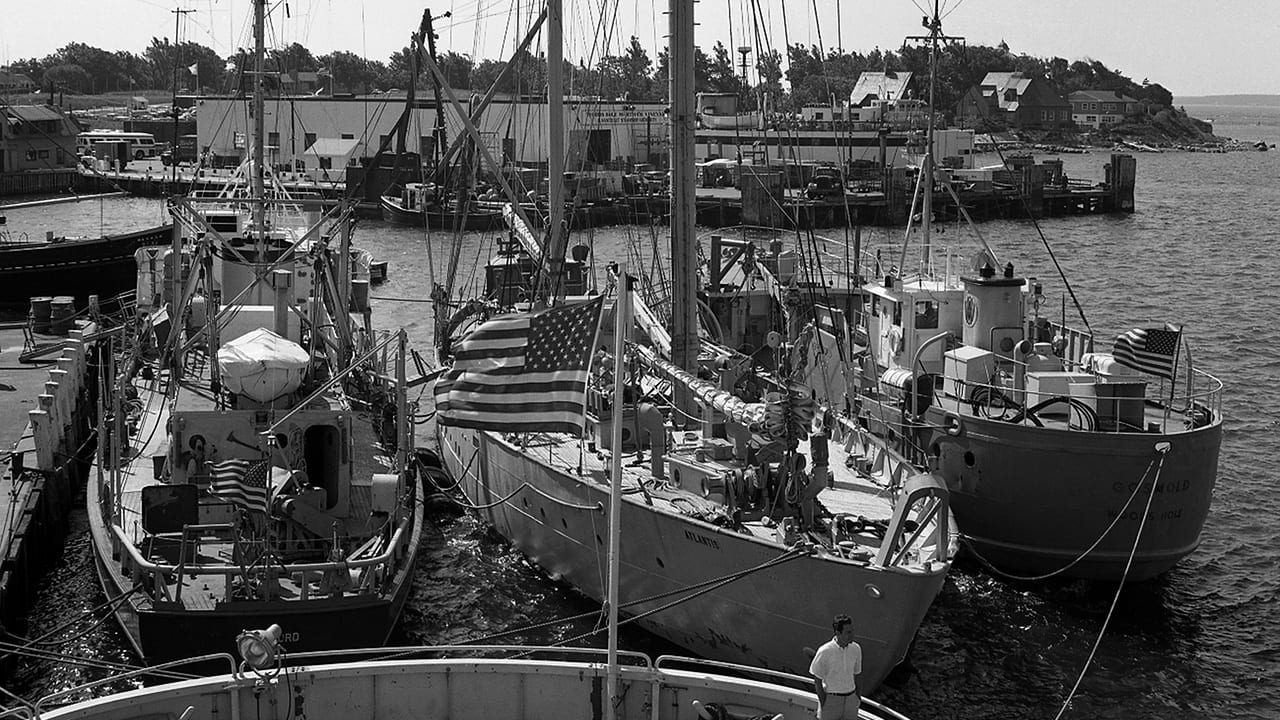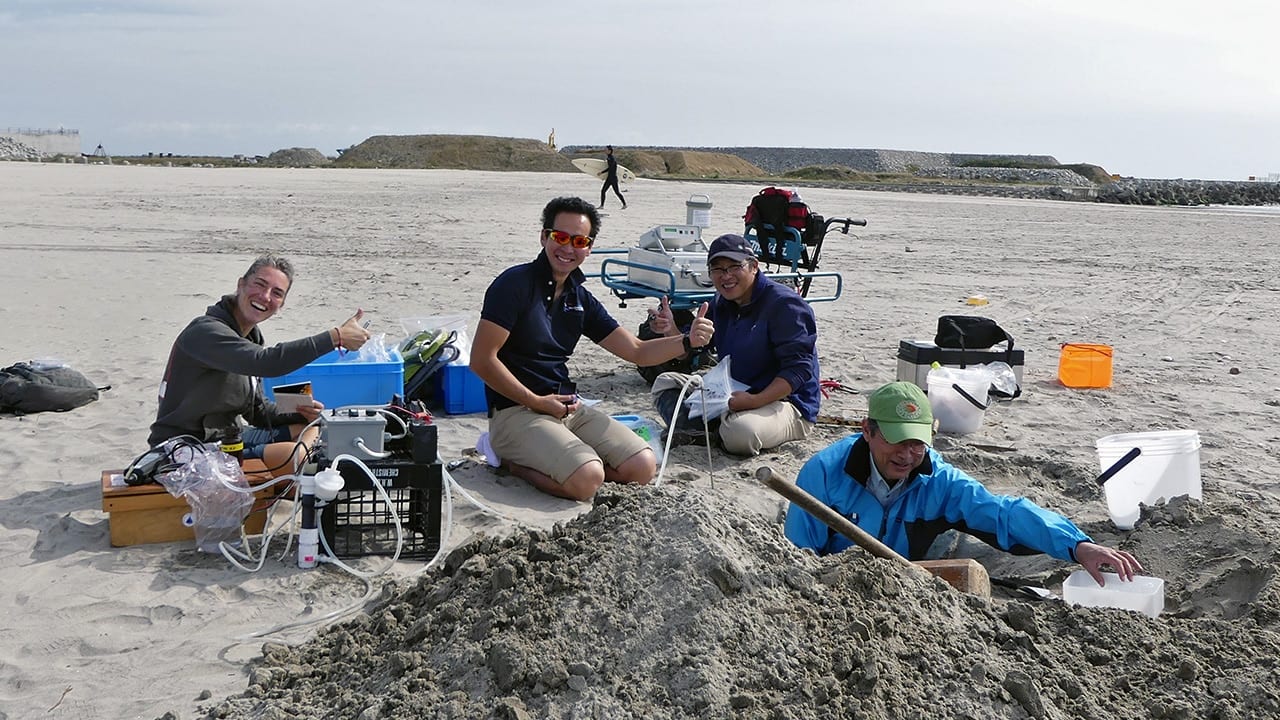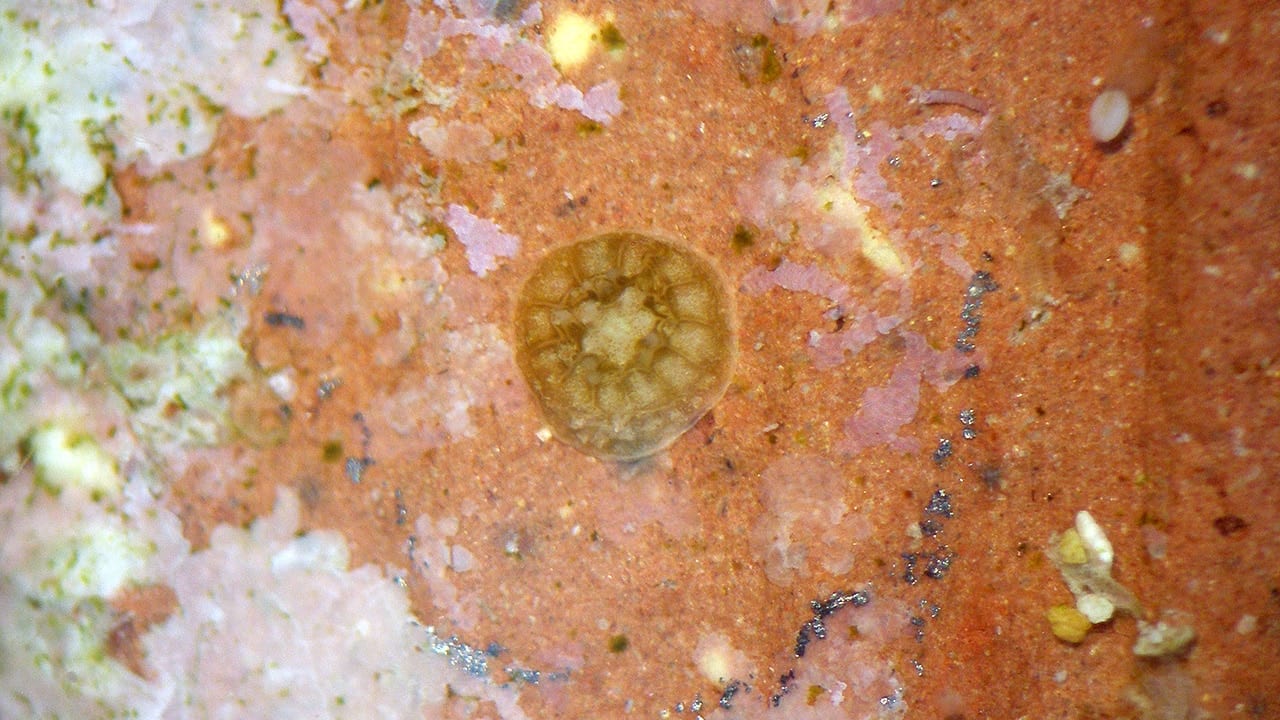Multimedia Items
Hail to the Discovering Heroes
Crowds of family members, WHOI staff, and other well-wishers—including hundreds of journalists and 18 film crews—thronged the pier at WHOI in September 1985, as the research vessel Knorr returned […]
Read MorePrecision Testing
WHOI marine chemist Aleck Wang and his research team are developing a new instrument to measure two key factors in the global carbon cycle that helps regulate Earth’s […]
Read MoreLatching On
An image from a high-powered microscope reveals a microbe that has colonized a microplastic fragment collected in the North Atlantic Ocean. Such marine microbes entice fish to ingest microplastics. […]
Read MoreSound Warp
This curious, colorful image may look a little like five bananas, but it is actually a spectrogram of sound waves recorded by a hydrophone in the ocean. More particularly, it […]
Read MoreCool, Calm, and Collected
WHOI scientist Rocky Geyer collects a water sample in the South River in Marshfield, Mass., to analyze the amount of suspended sediments in it. There won’t be much on […]
Read MoreThere Goes the Neighborhood
A curious penguin observes a group of scientists temporarily squatting on an icy terrain in Antarctica. WHOI scientist Ben Van Mooy (right) is leading a team that will core […]
Read MorePaying a Port Call
The WHOI dock is homeport to WHOI-operated ships, but it also hosts visiting research vessels from other institutions. In June 1985, Alcyone, the research vessel of the late Read More
All Aboard the Armstrong
After a tour of WHOI’s research vessel Neil Armstrong, a group of friends of WHOI stands before the ship’s name on the starboard bow: (From left) General Gordon Sullivan, retired Army […]
Read MorePlastics Adrift
Coring Corals
Woods Hole Oceanographic Institution scientist Anne Cohen (left) and Nathan Mollica, a graduate student in the MIT-WHOI Joint Program, extract core samples from a giant Porites coral in Risong Bay, Palau. They and WHOI […]
Read MoreVirgin Islands Research
Laura Weber, a graduate student in the MIT-WHOI Joint Program, teaches middle and high school students of the U.S. Virgin Islands about the role of microorganisms in the […]
Read MoreButterflies of the Ocean
Red Sea Mysteries
The Red Sea has a number of curious characteristics that are not seen in other oceans. It is extremely warm, surface waters often reach over 86° Fahrenheit, and the waters evaporate […]
Read MoreHAB
Green tide, Qingdao, Dongyan Liu (Photo courtesy of Don Anderson, Woods Hole Oceanographic Institution)
Read MorePending IOD
AUV Orpheus operations on board M/V Alucia during OCEANX cruise to the monuments. (Photo by Tim Shank, Woods Hole Oceanographic Institution)
Read MoreTiny Plastics, Big Investigation
Scientists at Woods Hole Oceanographic Institution (WHOI) are embarking on a long-term study of marine microplastics to answer a litany of questions, including how larger plastics break down into […]
Read MorePending IOD
Tim Shank and Luis Lamar inside the Nadir submersible during the OCEANX cruise on board Alucia. (Photo by Ken Kostel, Woods Hole Oceanographic Institution)
Read MoreRoots of the Sea
MIT-WHOI Joint Program Ph.D. student Cynthia Becker paddles her kayak into the mangroves of St. John, US Virgin Islands to collect water samples and study the microorganisms residing in […]
Read MoreMilestones for Alvin
In the Nursery
Bluefin tuna are the largest of all tuna species—adults can reach ten feet in length and weigh more than a thousand pounds. But they start out small, as 2- to […]
Read MoreBack to Atlantis
Members of a 1947-48 cruise row back to the R/V Atlantis (visible in the background). The primary purpose of the six-month “Med Cruise” was to prepare bathymetric charts of […]
Read MoreA Tale of Three Ships
The WHOI research vessels Crawford, Atlantis, and Gosnold (left to right) were all in Woods Hole, Mass., on this warm day in 1963. The Crawford, a 125-foot Coast Guard cutter […]
Read MoreWhat Lies Under the Beach?
A team of international scientists led by Ken Buesseler at WHOI dug pits to sample sand and groundwater at a popular surfing beach in Yotsukura, Japan, for residual radioactivity […]
Read MoreThat is a Spat
All coral colonies start off as a single newly settled polyp, or “spat.” This single polyp grows and divides asexually into thousands of clonal polyps that form a colony. Read More

